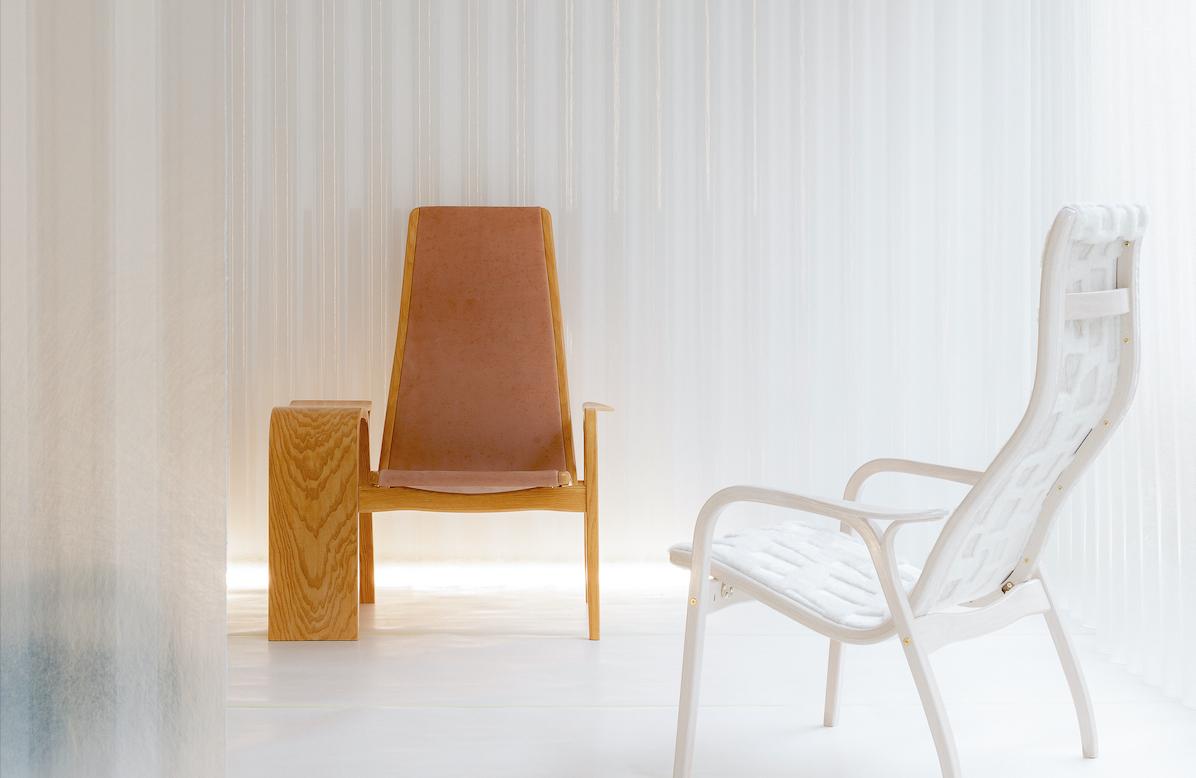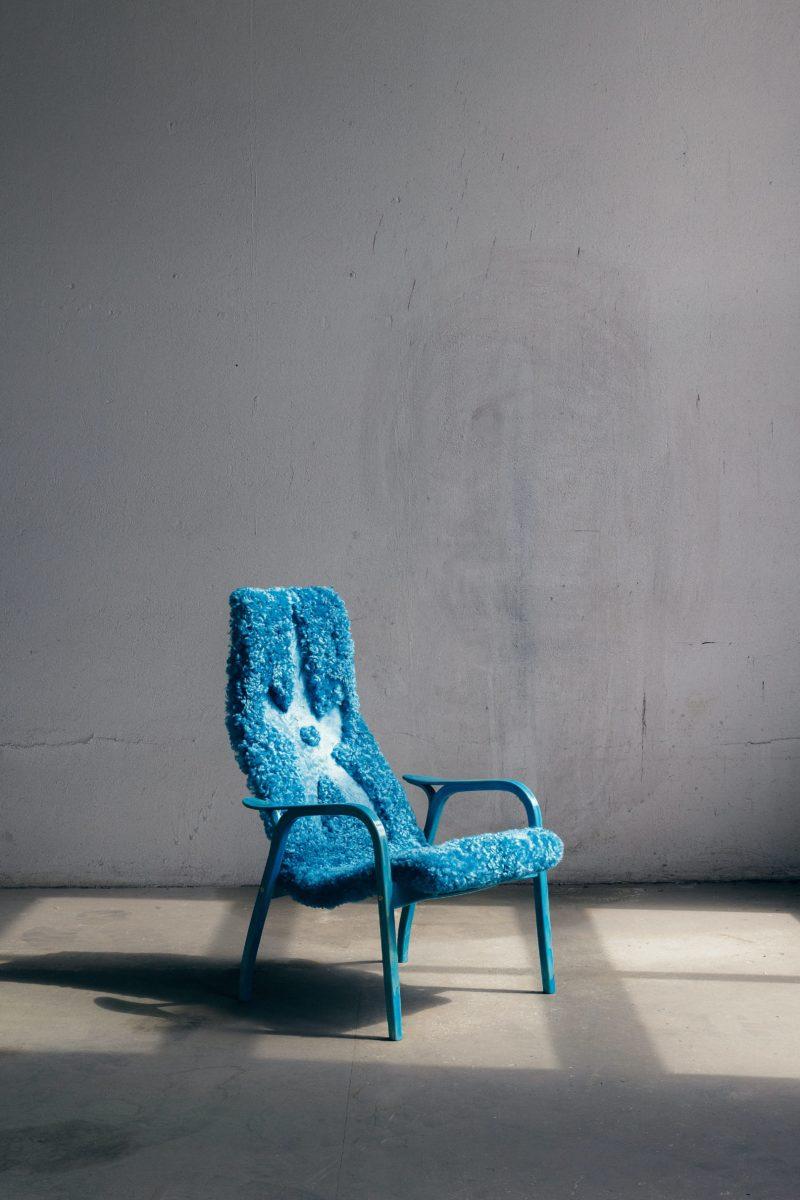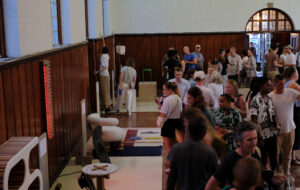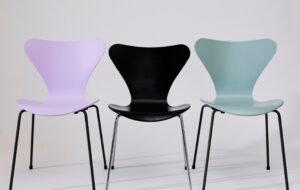Yngve Ekström’s 1956 Lamino chair is a well-loved classic of Swedish design. Now it has been given a new lease of life by emerging design studio Lab La Bla
 Photography courtesy of Lab La Bla
Photography courtesy of Lab La Bla
With its latest project, design studio Lab La Bla looks at Swedish furniture history and craft traditions through a contemporary lens. Entitled Lab La Bla-minos, it seeks the perfect balance between the past and present and sees the duo giving an icon of Swedish furniture design – the Lamino high-back chair designed by Yngve Ekström for Swedese in 1956 – a contemporary makeover.
Back in 1999, when a Swedish interior magazine asked its readers to vote for ‘the single piece of furniture of the 20th century’, the Lamino lounge chair won the title for its masterful craftsmanship and classic aesthetics. Today, the chair continues to hold its spot in the limelight, with many Swedes familiar with the chair.
‘Our project looks at iconic furniture and puts it in a new outfit basically,’ comment Lab La Bla’s designers, Axel Landström and Victor Isaksson Pirtti. ‘It’s the most Swedish chair – everyone has it or has seen it. People we’ve talked to described how the chair evoked memories of a dysfunctional family, visits to the psychologist or breezy summer nights.’
 Photography courtesy of Lab La Bla
Photography courtesy of Lab La Bla
‘Some thought of it as a chair for lazy dads and ageing grandmas. It was inspiring to listen to these wildly different experiences, noting how most people talked about the Lamino as if it was a someone – and not a something.’
With its clean lines and simple form, the original version of the chair features natural materials and fabrics, including laminated veneer, leather and sheepskin. Having won several prizes over the years, and still being manufactured by skilful craftsmen in Vaggeryd, in southern Sweden, the Lamino has stood the test of time.
‘Our aim was to materialise these collective memories about love, hate and summer breaks in one chair. Stories that shape-shift and come to life in a schizophrenic harmony in our Lab La Bla-minos,’ share the designers.
 Photography by Elsa Schröder featuring Lab La Bla’s designers, Axel Landström and Victor Isaksson Pirtti
Photography by Elsa Schröder featuring Lab La Bla’s designers, Axel Landström and Victor Isaksson Pirtti
Lab La Bla builds on the chair’s heritage but investigates how shifts in process and materials can change the outcomes of expression. To update the retro seat, the designers widened the armrests to create a stable surface for eating, drinking or smoking tobacco in comfort.
The high-quality leather was sourced from Böle Tannery, a fourth-generation family business located in the far north of Sweden, and the last spruce bark tannery in the world. The result is a beautifully coloured material, produced using only water and spruce bark.
Other iterations of the chair include a pearl embellished blue version and an all-white model, utilising locally sourced sheep fur from Tranås. The designers shaved the fur to engrave each piece with unique shapes and symbols that stand as metaphors for ageing and inheritance.
‘We translated this very iconic chair into different personalities,’ concludes Lab La Bla. ‘The chair is really a bit like Marmite – people either love it or hate it.’
















